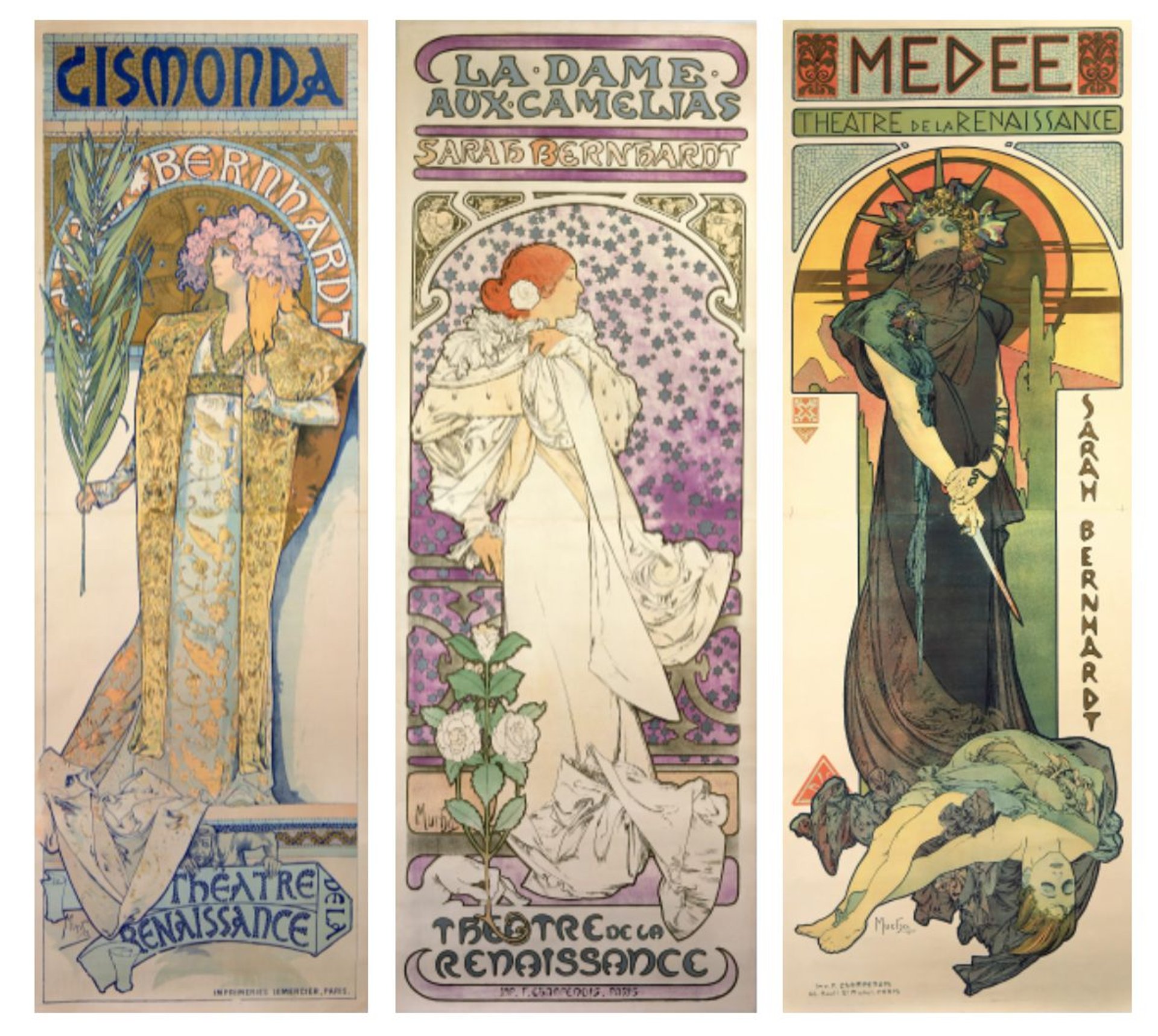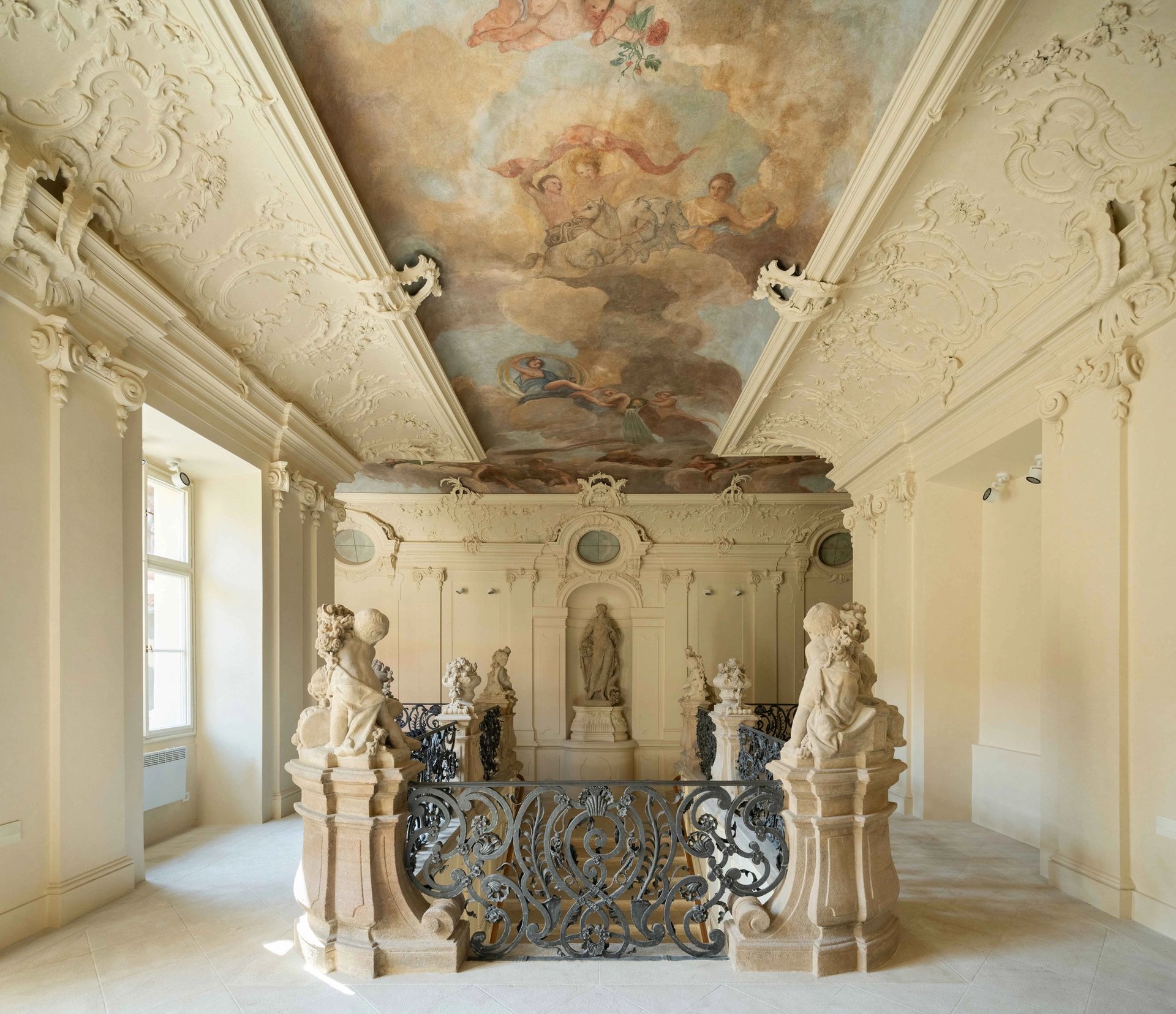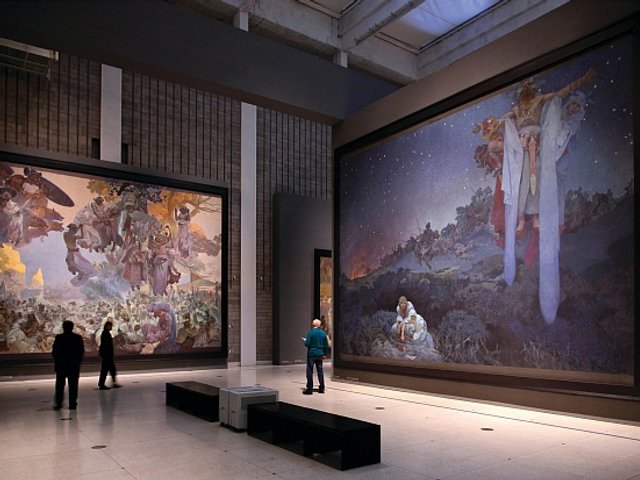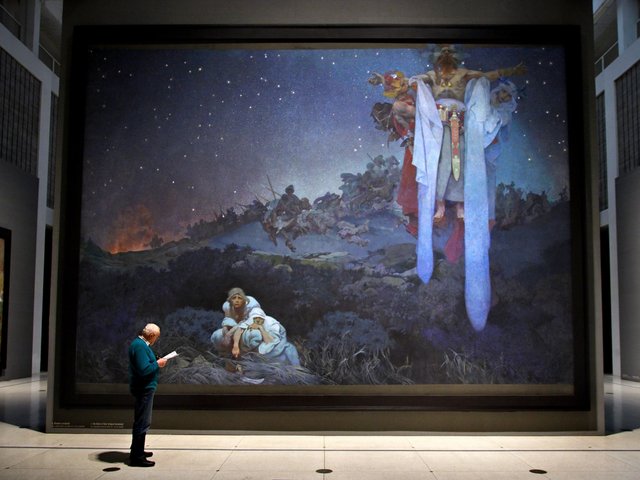The legacy of the prolific Czech Art Nouveau artist Alphonse Mucha will soon be given an elevated status in central Prague with the opening of a new dedicated museum. The institution, a collaboration between the Mucha Foundation and the Prague-based real estate developers Crestyl, will occupy over 1,100 sq. m in the renovated Savarin Palace, close to the city’s historic Old Town Square.
The museum, which is expected to open on 24 January 2025, is a central part of Crestyl’s wider Savarin Complex development, a major urban project being overseen by the British architect Thomas Heatherwick that includes the restoration of existing buildings and the creation of new open public spaces.
The new institution will have a floor plan more than double the size of Prague’s other Mucha Museum, located on nearby Pánská street. While that museum was previously affiliated with the Mucha Foundation, Marcus Mucha, great-grandson of Alphonse Mucha and the executive director of the foundation, says the agreement with the space’s operator has been “terminated” as of May this year.
Since then, Mucha claims, “it [the operator] no longer has any right to operate as such or use any of the intellectual property related to the Mucha Family Collection. The exhibition space on Panska Street is no longer affiliated with nor endorsed by the Mucha Foundation and its operations are unauthorised and in breach of its contractual obligations.”
While the version of the museum on Pánská street styles itself as “the only museum in the world dedicated to the life and work” of Alphonse Mucha, the new museum’s website says it is “the only official museum dedicated to the Czech artist.”
The Mucha Foundation was founded following the death of Alphonse Mucha’s son Jiri, in 1992, by Jiri’s wife, Geraldine Mucha, and their only son, John Mucha. At the same time, Geraldine established the Mucha Trust to manage Mucha’s artistic estate. Marcus says that works belonging to the Mucha Trust have been removed from the Pánská street site and “are now being rested.”
Working across painting, illustration and graphic design, Alphonse Mucha is best known internationally for his highly stylised theatrical posters and advertisements, including those he made in collaboration with the leading French actor Sarah Bernhardt. He rose to fame in Paris, then returned to his homeland in the latter part of his life. There, he created works such as his late masterpiece The Slav Epic (1912-28), a series of 20 large-scale paintings depicting the myths and history of the Slavic people, and a stained glass window that can still be seen in Prague’s Saint Vitus Cathedral.

A selection of colour lithographs by Alphonse Mucha for Sarah
Bernhard’s theatre productions (from left to right: Gismonda,
1894; La Dame aux Camélias, 1896; and Médée, 1898)
© Mucha Trust 2024
According to Marcus, the Savarin project will now place his great-grandfather’s “art and legacy firmly where it belongs, in a bespoke, beautifully designed space in the heart of historic Prague.”
New stories to be told
The museum’s opening display, put together by the Mucha Foundation’s curator, Tomoko Sato, “will present previously unexhibited works, including early oil paintings, hand-drawn studies for decorative documents, items exploring Mucha's fascination with Freemasonry, and study materials for The Slav Epic,” a museum statement says. It benefits “from the research and scholarship around Mucha conducted over recent years”, Marcus adds.
The exhibition galleries, designed by the Czech architect Eva Jiřičná and her AI Design studio, will occupy the 18th century building’s “most historically valuable and best-preserved rooms”, Marcus continues.

Interior view of the Savarin Palace
Photo: © Crestyl
The team behind the new museum hope that the Savarin development will also see the Slav Epic, currently located in Moravský Krumlov Castle, close to the city of Brno in South Moravia, brought to Prague. Mucha gifted the series to the capital, but it has since been subject to disputes over its ownership and display.
Marcus Mucha says “an agreement approving a new home” for the Slav Epic is now in place between the City of Prague, the Mucha Foundation and Crestyl, but that “a number of negotiations are ongoing”. While a 2026 opening has previously been targeted, Mucha notes timelines have “shifted post pandemic and the completion date is expected to be within three years of the start of construction, with the exact timing dependent on the issue of all necessary permits.”
He adds that while the galleries exhibiting the Slav Epic, set to be designed by Heatherwick, would operate as a “distinct project” from the museum, he sees the latter as providing a “journey through the life of Alphonse Mucha and how this pilgrimage led to the creation of The Slav Epic.”
A complex picture
The Art Newspaper reached out to the Panská street-based Mucha Museum for comment about the opening. Sebastian Pawlowski, the director of Muchovo Muzeum s.r.o, which operates the site, says: “The news brief distributed by the developer of Palace Savarin and the Mucha Foundation is grossly misleading as it implies that the Mucha Museum, which I founded and that has been in operation since 1998, is moving from its current location to a new location. This is not the case.”
Pawlowski adds that, in his view, “the original Mucha Museum in Panska is a fixture in the Prague cultural scene and will remain so,” noting that it “is currently showing a large part of the collection [that was] put together by Ivan Lendl (the Czechoslovak tennis player) with the help of Jiri Mucha”. He says the museum “is also planning to open an immersive experience in the city centre on Celetna street called the Mucha Experience, which will be another addition to its activities celebrating the works of Alphonse Mucha.”
Asked whether he has the right to continue using the Mucha Museum name, Pawlowski replied: “Let me put it this way: if a place is called Mucha Museum for 27 years it is probably for the new place in Palace Savarin to wonder if it has the right to call itself the same as the original. The most famous beer in the Czech Republic, Pilsner Urquell, had to call itself ‘the original pilsner’ because so many were stealing its name.”
UPDATE 21 January: The opening of the Mucha Museum has been delayed and will now take place on 24 February




